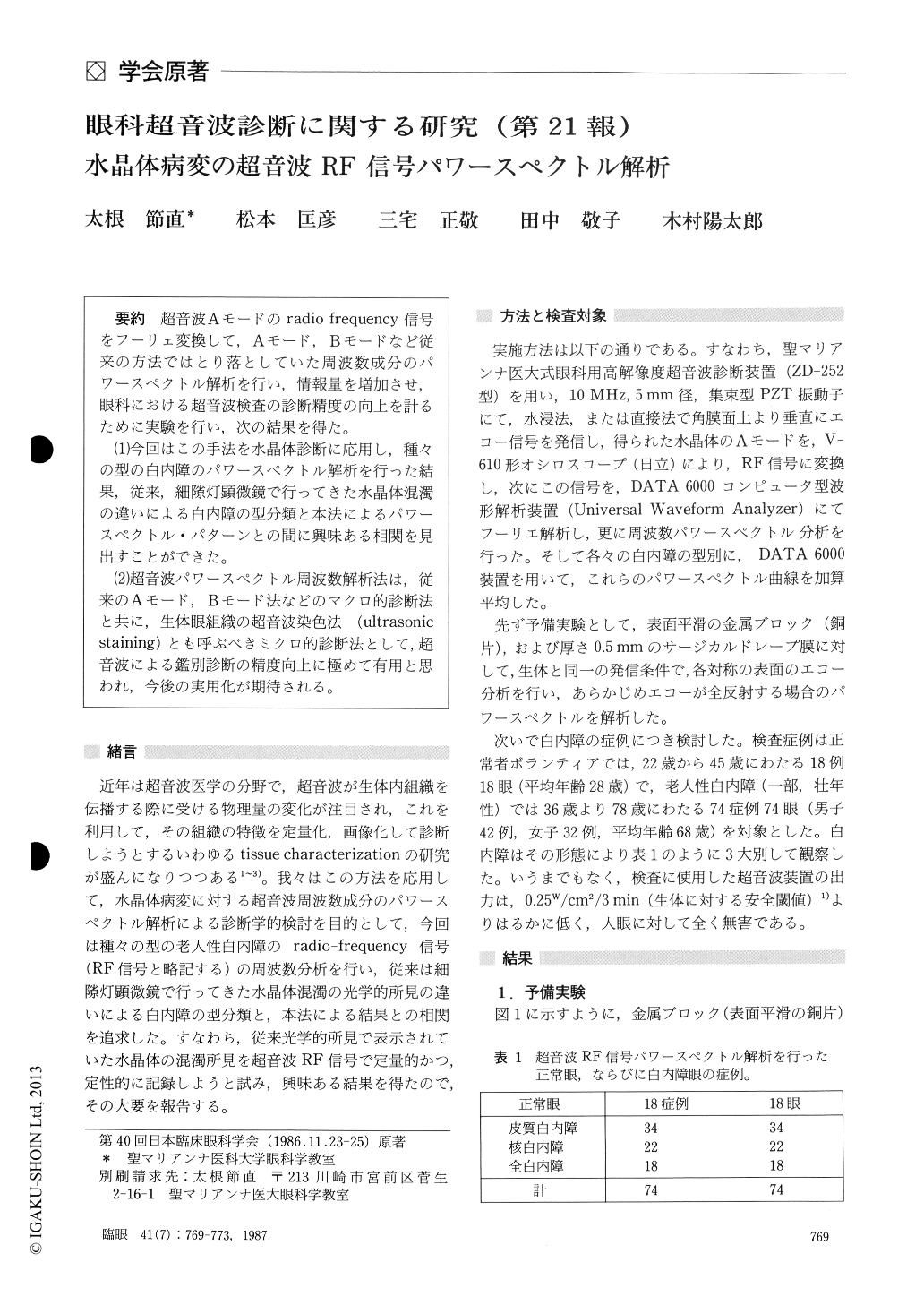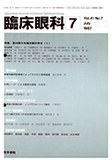Japanese
English
- 有料閲覧
- Abstract 文献概要
- 1ページ目 Look Inside
超音波Aモードのradio frequency信号をフーリェ変換して,Aモード,Bモードなど従来の方法ではとり落としていた周波数成分のパワースペクトル解析を行い,情報量を増加させ,眼科における超音波検査の診断精度の向上を計るために実験を行い,次の結果を得た.
(1)今回はこの手法を水晶体診断に応用し,種々の型の白内障のパワースペクトル解析を行った結果,従来,細隙灯顕微鏡で行ってきた水晶体混濁の違いによる白内障の型分類と本法によるパワースペクトル・パターンとの間に興味ある相関を見出すことができた.
(2)超音波パワースペクトル周波数解析法は,従来のAモード,Bモード法などのマクロ的診断法と共に,生体眼組織の超音波染色法(ultrasonicstaining)とも呼ぶべきミクロ的診断法として,超音波による鑑別診断の精度向上に極めて有用と思われ,今後の実用化が期待される.
We attempted to obtain a more detailed informa-tion in A-mode ultrasonography by processing the radio-frequency signals through Fourier analysis. The A-mode ultrasonogram was first converted to radio-frequency signals by a Hitachi V-650 oscil-loscope. A built-in computer, DATA-6000 Univer-sal Waveform Analyzer, subjected the waveform to Fourier analysis and frequency spectral analysis. We applied this procedure to 74 eyes with senile cataract and 18 normal eyes as control.
We observed various radio-frequency signal spec-trum patterns in the spectral frequency range of 11-50 MHz on the mean sum for different types ofcataract. cataract. We observed flat type for normal lensshowing-30 descending type for cortical cata-ract showing-40 to-45 dB, flat type for nuclear cataract, showing -40 dB, and flat type for total cataract, showing -50 dB. This procedure thus seemed to be of value in differential diagnosis of clinical types of cataract.
Rinsho Ganka (Jpn J Clin Ophthalmol) 41(7) : 769-773,1987

Copyright © 1987, Igaku-Shoin Ltd. All rights reserved.


